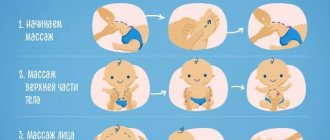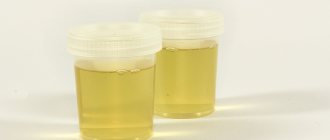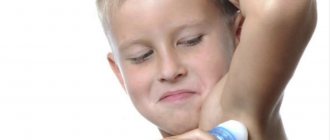A hernia is a disease that manifests itself by the protrusion of an organ through an opening, either natural or that appears during the development of the disease. This happens due to the displacement of the organ and its subsequent incorrect position. As a result, the organ becomes very vulnerable, disruption of its functions and injuries are possible.
An umbilical hernia in a newborn is especially frightening: young parents are concerned about the health of their child and panic when they notice such an illness.
On average, a hernia in newborns is observed in 25% of infants; premature infants are more often at risk of development. We will help parents deal with this problem: we will consider the symptoms and signs of a hernia, its treatment and preventive actions.
How to identify a hernia in a child: observation and symptoms
After the umbilical cord falls off, parents notice that the belly button protrudes when the baby strains, cries or screams. Seeing a hernia is easy and simple - it looks like a round or oval bulge. Usually the protrusion is easy to put back into place, and this does not cause any discomfort to the baby.
But! If you first notice such a symptom in your baby, he should first be examined by a doctor to make an accurate diagnosis.
A hernia can be confused with a possible cancerous tumor or other ailment, so the first thing you need to do is understand what you are dealing with. A hernia can be put back into place, but malignant tumors cannot.
The size of the hernia directly depends on the size of the muscles in the abdomen. It may also increase in the first months. If the size is large, the surrounding skin swells noticeably. If you gently press your finger into the navel area, it will penetrate into the abdominal cavity - this is another evidence of the disease.
What kind of disease is this?
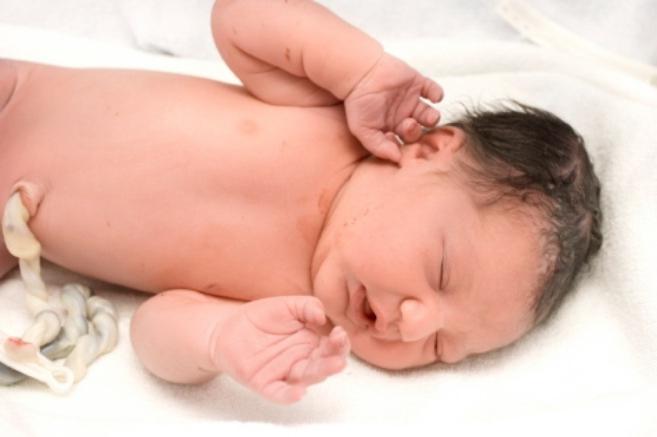
An umbilical hernia in newborns is the so-called umbilical ring that is not completely closed. It remains in the place where the umbilical cord used to be when the baby was in the womb. During childbirth, it is cut and clamped. Thus, usually within 10-14 days the dried area of skin falls off, and a scar remains, which is later called the navel. An umbilical hernia appears in a child if the ring is not completely closed, and the intestines and other parts of the abdominal organs can protrude through the hole under the skin. The size of a hernia varies: from 1 cm in diameter to 5 cm or more. It all depends on the degree of neglect of this disease. A hernia in newborns, at first glance, may not be noticeable. Only if you touch it with your finger, you can feel a certain emptiness in this place. It looks like a ball that, when pressed, disappears by itself.
Umbilical hernia: causes of appearance
- Heredity. If one of the parents had a hernia in childhood, there is a high chance that the child may also develop one.
- Premature and/or complicated pregnancy.
- Weakness of the abdominal muscles.
- Anomaly of connective tissues.
- Low birth weight.
- Constipation and gas formation.
- Excessive crying and/or coughing in the infant.
- Pathology of the abdominal wall.
- Rickets.
In many ways, the appearance of a hernia depends on the development of the fetus during pregnancy, when the health of the unborn child is significantly influenced by the lifestyle of its mother. Eating smoked and spicy foods, indulging in coffee, alcohol and cigarettes can cause excessively soft tissue without tone in a child. This can subsequently lead to the formation of a hernia.
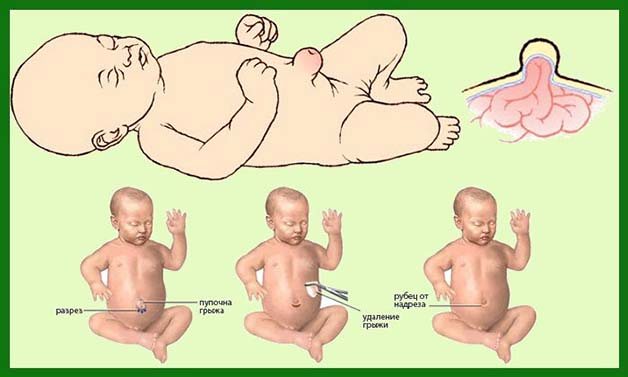
Congenital or acquired
No matter what more experienced parents or illiterate doctors say, there are two main types of umbilical hernia in newborns. The first of them is congenital, i.e. the child is already born with her. There are several reasons for this:
- Disorders during pregnancy, i.e. a long-term illness caused by any infection or poor environment. As a result, the baby develops more slowly in the womb, and by the time it is born, the umbilical ring does not completely narrow.
- Weak abdominal muscles in a child. The skin in this area is inelastic and, as they say, underdeveloped. In this regard, the first restless months of a baby’s life only lead to a worsening of the situation.
Also, an umbilical hernia in a baby may appear during the first year of life. At this time, the umbilical ring is completely closed. But as a result of prolonged constipation, frequent anxiety or increased gas formation, this process will proceed much more slowly. Pediatricians warn parents of children who are diagnosed with rickets at an early stage of life about the high likelihood of this disease occurring, since muscle tone is significantly weakened. This is done for timely preventive actions aimed at reducing the hernia.
Traditional treatment
If your baby has been diagnosed with a hernia, you need to provide him with proper care at home.
- Before feeding, the baby is placed on his stomach for a short period of time on a hard and flat surface covered with a clean diaper. You can post it after the umbilical wound has completely healed.
- It is necessary to massage regularly. On this issue, it is better to consult with your doctor: he will explain what and how to do correctly, and perhaps recommend a suitable specialist. In general, tummy massage is performed as follows. It is carried out from the second week, when the umbilical wound has completely healed. The massage is performed with soft clockwise movements, synchronous counter stroking (with the right hand on the left side down, with the left hand on the right side up), stroking the oblique muscles (one hand is on the navel area, the other performs stroking movements). It is important that the child is comfortable during the massage and does not cry.
- Physiotherapy. Physical therapy, like massage, is carried out by a massage therapist or exercise therapy specialist. Parents can study with a professional to understand how to treat themselves at home, or take their baby for treatments regularly.
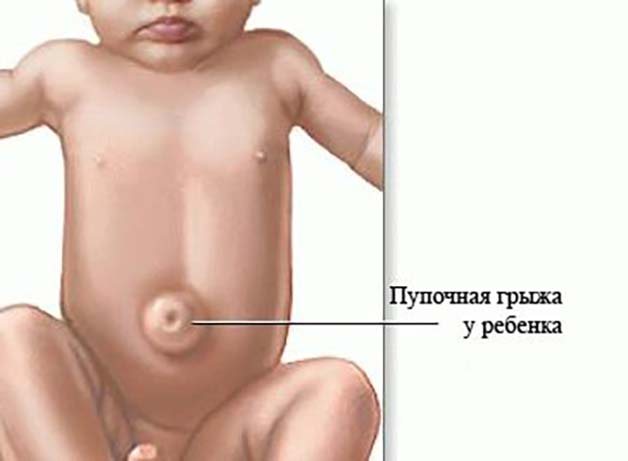
Laying on the tummy, massage and physical therapy are traditional treatments for hernia. Also, modern medicine offers special therapeutic plasters that hold the hernia inside the ring and help the abdominal walls to strengthen. The product is convenient and good, but can cause irritation on the baby’s delicate skin. An alternative option without irritation is to use a special bandage. It is recommended to use such products after consultation with a pediatrician.
If the disease disappears within 6 months with this treatment, then everything is normal. If the hernia does not go away after this time, surgery may be required.
Why do umbilical hernias occur?
Umbilical hernia in newborns can be hereditary. It is believed that the likelihood of this disease occurring in children is 70% determined by whether the parents had it. However, there are other reasons:
- Weakness of the umbilical ring muscles;
- Defect of the anterior abdominal wall;
- Weakness of connective tissue;
- Pressure inside the peritoneum (colic, constipation, severe prolonged crying, severe cough);
- Rickets;
- Birth before term (prematurity).
There is a common interpretation of the cause of umbilical hernia in children as incorrect actions of the midwife when cutting the umbilical cord. However, this makes no sense. Cutting the umbilical cord and applying an umbilical brace does not affect the size of the umbilical ring. Symptoms indicating the presence of a hernia in newborns appear for the reasons described above.
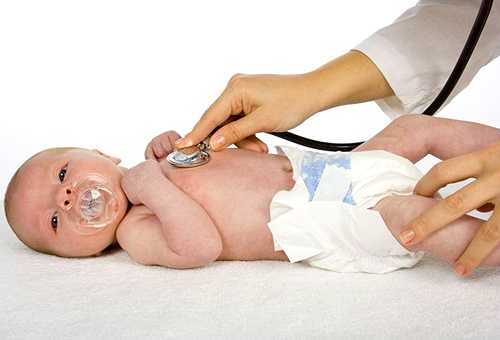
Treatment
Large hernias in infants are a major concern for parents. Most often, intestinal fragments protrude. Then you can notice how it contracts and digestion occurs through it. However, the symptoms that appear do not create discomfort for the baby. You may notice that babies with hernias are in a worse mood and are more tearful. However, the cause is most likely associated colic or bloating.
Umbilical hernias in newborns are a pathology that can go away on its own as the child grows older. In other words, until 4-5 years of age, surgical removal of this defect is not required. If you follow conservative treatment, then a hernia in children can go away by the age of six months to one year.
Treatment with conservative methods includes:
- Place newborns on their tummy 10-15 minutes before each feeding. This is not only treatment, but also prevention of hernia in children.
- Abdominal massage. A massage can be performed by a massage therapist at home or in a children's clinic, and after training, by the mother herself.
- Physiotherapy. It is carried out in a clinic under the guidance of a physical therapy doctor.
- Applying a bandage, the role of which is played by a patch. Only a pediatrician or surgeon can recommend a patch as a method of treatment. It is prohibited to do this on your own or on the advice of friends, despite the fact that the patch is sold in any pharmacy.
Useful: Signs and methods of treating mononucleosis in children
Separately, I would like to dwell on the method in which a patch is applied to the umbilical hernia. This can be done in two ways: with the formation of a fold and without the formation of a fold. Treatment with a patch for the formation of a fold is carried out in 3 stages of 10 days. At the border of each stage, the condition of the umbilical hernia is checked.
If conservative treatment does not help, you can think about surgery. This measure is taken if:
- The size of the umbilical hernia is more than 2 cm;
- Children are over 5 years old.
Urgent surgical intervention also occurs when an umbilical hernia is strangulated. For children, it can be dangerous due to intestinal obstruction or the death of a crushed intestinal fragment. Strangulation has the following symptoms that characterize the condition of the hernia:
- Soreness;
- Hardness, density;
- Inability to straighten.
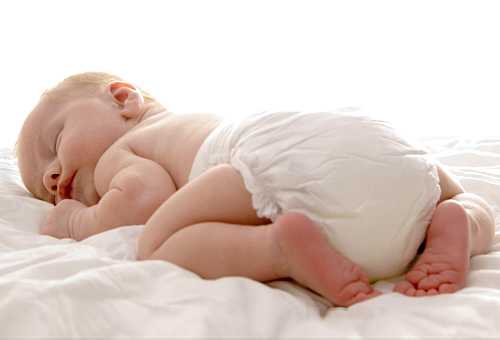
Prevention
In newborns, an umbilical hernia usually occurs in the first month of life. Although it can appear before the baby reaches a year. To reduce the likelihood of this pathology occurring and not subsequently undergo treatment, you should prevent umbilical hernia in newborns. First of all, it includes eliminating the causes that can cause pathology.
Pressure of the abdominal organs causes constipation, colic and excessive crying. Children should be protected from this. The problem of constipation and colic can be solved with a proper diet. Speaking about newborn babies who are breastfed, it is worth noting that all responsibility for the diet lies with the mother. For artificials, the mixture should be selected correctly.
If the problem of colic and constipation cannot be solved by adjusting the diet, a special massage will help. In general, massage is a necessary routine moment for all newborn children. To prevent the occurrence of an umbilical hernia, you can massage the tummy by stroking it clockwise.
If your child has an umbilical hernia, you should consult a doctor immediately. Despite the fact that in most cases it goes away on its own and does not require special treatment, it is still necessary to periodically see a specialist. Whatever method the doctor recommends - gymnastics, massage or a patch - you need to follow his recommendations and then everything will be fine.
Complications of hernia in a newborn
The most important and dangerous complication is strangulated hernia. It occurs rarely, but knowing how to detect it on time is necessary for every parent whose child has a hernia. Symptoms are as follows: severe crying and discomfort, loss of appetite or refusal to eat, severe paleness or redness of the skin at the site of the hernia, vomiting.
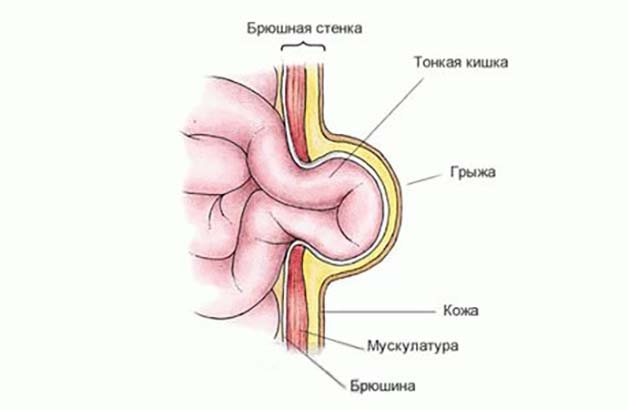
It is important to understand the seriousness of the situation in the event of such a complication.
If a hernia is strangulated, self-treatment is prohibited. Immediate treatment is required to avoid necrosis of living organ tissue, and as soon as possible.
Peritonitis, an inflammation followed by the discharge of pus, may also occur. If medical assistance is not provided in time, death is possible. If the infringement is observed within 24 hours and the child is not given the necessary assistance, there is a 25% chance of death.
Symptoms of a hernia, does it bother the child?
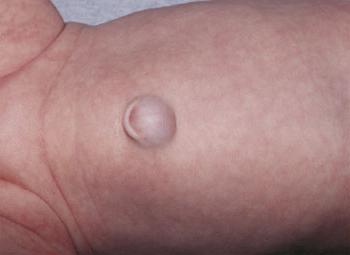
In fact, it is worth immediately reassuring caring parents with the information that an umbilical hernia does not cause any pain or anxiety to your baby. Symptoms in newborns in this case are manifested only by protrusion of the navel. If the hernia is small in size, then all the fragments of the abdominal organs fall into place without problems when the child lies on his back. Of course, there are complicated forms of this diagnosis. In this case, the hernia is large, the umbilical ring does not close during the first five years of the child’s life, and when exercising or coughing, the child experiences abdominal pain and even nausea. Often such signs lead to strangulation of the contents of the hernial sac, in which case surgical intervention is urgently required.
ethnoscience
If the doctor has diagnosed a mild and harmless hernia and has allowed the use of folk remedies as a supplement, you can use any of the suitable recipes. They will help cure the hernia faster.
- Wipe the copper coin and wrap it in a soft and clean cloth, carefully place it on the hernia and secure it with a bandage. You can also thoroughly clean the coin, then warm it in your hands and use it to perform a light massage, alternately stopping at the site of development of the hernia.
- Make a small cake from medicinal clay, wrap it in a bandage and heat it to body temperature. After this, place it at the site of the hernia and secure it with a bandage. When the clay begins to dry out, the cake can be removed. The procedure is repeated the next day. If treatment is successful, the hernia becomes lighter, and after three days it completely disappears.
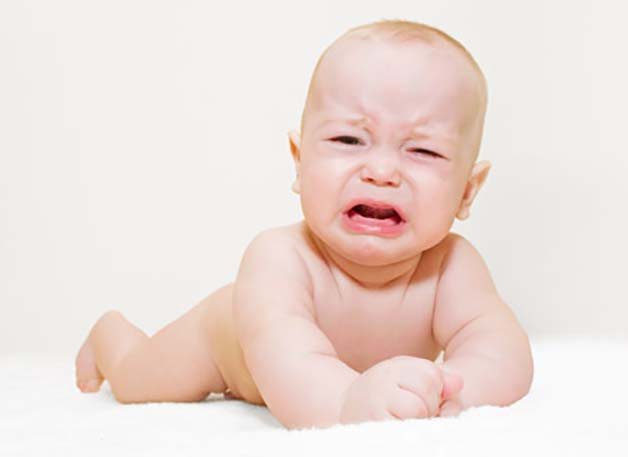
Causes and mechanism of hernia strangulation
Insufficient formation of connective tissue and non-closure of the umbilical ring lead to the appearance of an umbilical hernia. The development of pathology can be triggered by increased intra-abdominal pressure, which is often a consequence of severe coughing, intense crying or straining during constipation.
Increased intra-abdominal pressure contributes to the expansion of the hernial orifice, as a result of which the omentum and intestinal loop may exit the abdominal cavity.
The subsequent narrowing of the hernial orifice leads to the fact that the fragments of organs that come out cannot return to their place.
The appearance of the pathology is influenced by genetic predisposition, as well as complicated pregnancy, resulting in a negative impact on the child during the intrauterine period. Factors that increase the risk of developing an umbilical hernia include unfavorable environmental conditions, the use of certain medications and chemicals by a woman, and infectious diseases during pregnancy.
Hernia prevention
To protect the baby from the possible appearance and development of a hernia in the first months of life, parents need to follow several specific preventive rules.
- Get rid of excessive gas formation and constipation in your baby. In case of gas formation, a gas outlet tube is used, and Plantex, Bobotik, Espumisan, dill water, etc. are prescribed. In case of constipation, glycerin suppositories, Duphalac, and Microlax microenemas are prescribed.
- Place your baby on his tummy more often to strengthen his muscles.
- Do gymnastics regularly. It is useful not only as a prevention of this disease, but also for the full and healthy development of the baby.
- When planning a pregnancy, the expectant mother needs to reconsider her lifestyle and diet. You should give up alcoholic drinks and cigarettes, switch to a healthy and nutritious diet, and give up excessively salty, sweet, spicy and smoked foods. It is necessary to monitor your health and the health of the fetus in general.
Types of hernias in children
Any hernia has the following components:
- hernial orifice - a hole in the abdominal wall or diaphragm;
- hernial sac - a section of the peritoneum that has passed through the hernial orifice;
- hernial contents - what is in the hernial sac.
Hernias are classified according to several criteria:
- According to the time of formation. Congenital - the diagnosis is obvious already at birth, acquired - the pathology develops as the baby grows up.
- By localization. A hernia in a child's abdomen (abdominal hernia). Its varieties are the inguinal, umbilical and white line of the abdomen.
Umbilical
A navel hernia is the most common. A peri-umbilical hernia in children is a consequence of the release of an intestinal loop or part of the omentum through the dilated umbilical ring into the subcutaneous space. Read more about umbilical hernia →
Inguinal or testicular hernia
A hernia in the groin is formed when the closure of the inguinal canal is disrupted, which normally occurs at the age of 6-7 months after the descent of the testicles from the abdominal cavity into the scrotum. If the inguinal canal remains open, loops of intestine can fall through it under the skin or descend lower, down to the scrotum. In girls, the pathology is rare - with anomalies in the structure of the pelvic and groin organs.
Features of hernial protrusion in the groin:
- according to localization it can be inguinal or inguinal-scrotal;
- bilateral (less often) or unilateral;
- according to the degree of severity - incomplete (does not extend beyond the inguinal ring) and complete (extends beyond it and spreads along the spermatic cord);
- hydrocele and spermatic cord cyst are often observed as concomitant diseases.

Read more about inguinal hernia in children →
Hernia of the white line of the abdomen
In a child, a hernia of the white line of the abdomen is often combined with an umbilical hernia. Supraumbilical hernia in children is a consequence of weakness and hypotension of the anterior abdominal wall. With an increase in intra-abdominal pressure, a defect in the abdominal aponeurosis is formed and separation of the abdominal muscles occurs. A white abdominal hernia forms in children, which can be located above or below the navel. Read more about hernia of the linea alba in a child →
Symptoms
The main symptom of the disease is a protrusion in the navel area. This formation in a baby resembles a small nodule, which can be very tiny or reach 6-7 cm in diameter.
If the hernial sac contains intestinal loops, the formation acquires a bluish tint. When fragments of the omentum come out, the nodule becomes reddish.
It is easy to identify such a pathology in a child when his stomach is tense. This occurs most often during coughing, crying, or defecation. In a calm state, the formation is difficult to notice.
The nodule is highly mobile and can be easily adjusted with finger pressure. But then he returns to his place again.
If pinching occurs and the tissues begin to undergo compression, the following signs appear:
- The child behaves restlessly and often cries heavily in pain.
- The protrusion cannot be reduced.
- The baby has abdominal tension.
- Defecation is disrupted.
- Possible attacks of vomiting.
- Body temperature rises.
Sometimes there is blood in the stool. Signs of intoxication of the body gradually increase. The skin turns blue or pale, the child becomes lethargic and loses his appetite. Loss of consciousness is possible due to a sharp decrease in blood pressure.
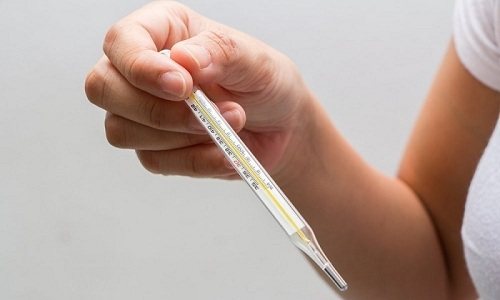
Also, hernial strangulation is manifested by an increase in body temperature in the newborn.
The presence of such signs indicates a serious condition of the baby, which requires immediate medical attention.




